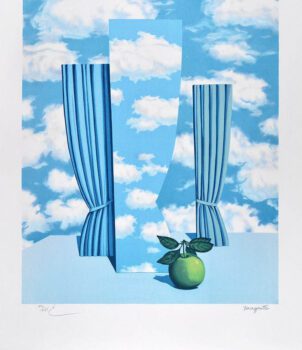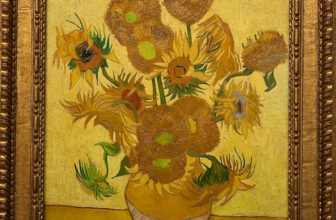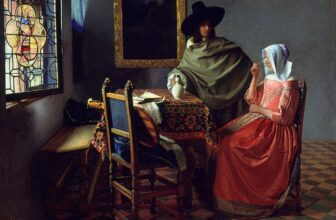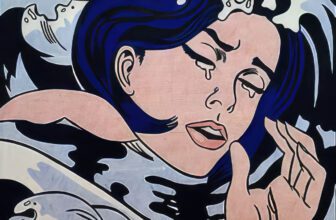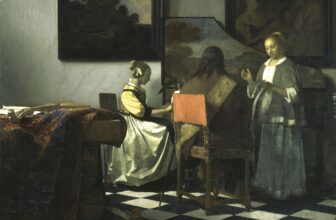Meaning of Rene Magritte’s Le Beau Monde Painting
In the realm of 20th-century art, few names resonate as deeply as René Magritte. The Belgian surrealist, famous for his thought-provoking imagery and enigmatic visual language, created works that forever altered how we perceive the relationship between image and meaning. Among his lesser-known yet striking pieces is Le Beau Monde, or “The Beautiful World.” This painting is a perfect encapsulation of Magritte’s philosophical engagement with reality, illusion, and the human condition.
But what exactly is Le Beau Monde all about? Who are the figures it portrays, and why does it evoke such mystery and tension? What does it mean? Let us journey into the depths of this haunting surrealist landscape, unwrapping layers of symbolism, interpretation, historical context, and artistic brilliance.
Who Was René Magritte?
Before diving into the painting, it is essential to understand the artist behind it. René Magritte (1898–1967) was a Belgian surrealist painter best known for works that juxtapose ordinary objects in unusual contexts. His aim was often to challenge observers’ preconditioned perceptions of reality.
Magritte wasn’t interested in abstraction for abstraction’s sake. Instead, his work remains striking for its clarity and precision , realistic depictions of people and objects that, when placed together, defy logic. Unlike some of his surrealist peers who embraced chaotic or dreamlike brushwork, Magritte opted for a clean, illustrative style that intensified the absurdity of his compositions.
What Is “Le Beau Monde”?
Le Beau Monde, translated as “The Beautiful World” or more colloquially, “High Society,” is a surrealist painting completed by Magritte in 1962. The artwork is not as frequently discussed as The Son of Man or The Treachery of Images, yet it carries within it a rich web of conceptual provocation and symbolic depth.
At first glance, the painting shows a somewhat ordinary-looking room with wallpapered walls and a door. A man, often interpreted as a self-portrait of Magritte himself, stands facing a painting on the wall , or perhaps he is looking into another world. The window/painting seems to defy spatial logic. Through this frame, another world emerges: a bright sky with white clouds.
But there’s a trick here, a subtle sleight of hand , it is unclear whether we’re looking at a painting within a painting, a window, or even a portal to another reality. The distinction between interior and exterior dissolves. As always with Magritte, the illusion is intentional.
The Scene: What’s Happening in “Le Beau Monde”?
In Le Beau Monde, we’re presented with a paradox. The composition appears simple but is riddled with contradictions. A suited man stands in what seems to be an elegant interior. A rectangular opening, positioned on the back wall, shows the classic Magritte motif: a blue sky punctuated by cumulus clouds. But what is this opening? A window, a mirror, a painting? That question is central to understanding the work.
There is a dissonance here: the man is inside a room, yet the sky visible in the rectangle suggests the outdoors. However, the edges of the frame do not match the aesthetics of a window. The placement suggests something hung on the wall , a painting or a mirror , yet what it reflects or reveals is incongruent with the enclosed space.
What’s happening is nothing , and everything. This is not a narrative painting in the traditional sense. Rather, it captures a metaphysical moment , an idea frozen in visual form.
The Style: What Type of Art Is It?
Le Beau Monde is a quintessential example of Surrealism, but with Magritte’s distinctive twist: philosophical realism with a surreal undertone.
Unlike Dalí’s melting clocks or Ernst’s dreamlike mutations, Magritte embraced clarity and visual logic to subvert meaning. His works are crisp, almost photographic in their representation, which makes their surreal components even more jarring. This stylistic approach is often described as “Magic Realism” or “Conceptual Surrealism”.
In Le Beau Monde, the artist borrows from domestic realism , the wallpaper, the tailored suit, the architectural lines , but fractures it with the surreal window/painting. This blending of the familiar and the impossible defines Magritte’s oeuvre.
Symbolism and Meaning in “Le Beau Monde”
The genius of Magritte lies not only in what he paints but in what he makes us question. In Le Beau Monde, every element is symbolic, though not in the traditional allegorical sense. Let’s break it down:
a. The Sky Through the Frame
The recurring motif of sky and clouds is central in Magritte’s work. This symbol typically represents freedom, imagination, and the vast unknown. But when confined within a frame (as in this painting), the freedom becomes contained, controlled. It may suggest illusion, a false portal to the outside world.
Are we looking through a window? Or are we seeing a painting of the sky? Is it real or a representation? This conundrum is a challenge to our perception of truth , can we ever trust what we see?
b. The Man in the Suit
The suited figure is a hallmark of Magritte’s self-representation. He often used a bowler-hatted man, but in this piece, the figure appears more subdued, faceless, and anonymous. He represents the bourgeois everyman , a product of the modern industrial age.
The man’s presence raises existential questions: Is he admiring the beauty of the world, or trapped within a constructed version of it? Is he us , the viewer , confronted with a version of reality we long for but cannot attain?
c. The Interior vs. Exterior
The interior room , closed off, neatly decorated, orderly , represents the constructed, rational world of man. In contrast, the sky beyond the frame symbolizes the natural world, untouched and unknowable.
But here’s the twist: the only glimpse we have of that “beautiful world” is within a painting (or perhaps a window). This irony underscores one of Magritte’s enduring themes , the notion that our access to reality is always mediated, often through art, perception, or mental constructs.
What Is “Le Beau Monde” All About?
The title itself is a clue. “Le Beau Monde” can be translated as “High Society” or “The Beautiful World.” There’s an inherent irony here. What is “beautiful” about this scene? The rigid room? The solitary man? Or the framed sky?
This duality reflects Magritte’s skepticism about appearances. Perhaps the title critiques the artificial world of the elite , polished on the outside but detached from true, boundless beauty. Alternatively, it might suggest that what we perceive as beautiful (the outside world, nature, freedom) is always filtered through a manmade lens.
The painting becomes an allegory for modern alienation. The man stands within a boxed interior, gazing longingly (or emptily) at a framed version of nature. We, too, live in constructed environments, cut off from the real world, experiencing nature only through images, screens, and curated simulations.
It also suggests a comment on art itself , that what we consider “art” is merely a representation, not the thing itself. The painting in the painting is not the sky , it’s an image of the sky. Just as Magritte famously said in The Treachery of Images, “Ceci n’est pas une pipe” (“This is not a pipe”), so too Le Beau Monde tells us: this is not the world. It’s a version. A facade.
How Was It Painted?
Like most of Magritte’s mature works, Le Beau Monde was painted in oil on canvas, using his trademark precise, clean technique. He avoided gestural brushwork or abstraction, aiming instead for a photographic realism that made the surrealism more pronounced.
Magritte often used preparatory sketches, though his compositions were largely conceptual before being physical. He believed in painting ideas, not feelings or expressions. His studio was organized, methodical , quite the opposite of the bohemian artist stereotype.
In Le Beau Monde, each element is carefully rendered: the texture of the wallpaper, the shadow on the floor, the brightness of the clouds. This clarity serves a purpose: to trap us into thinking we understand what we see , before revealing we do not.
Where Is Le Beau Monde Painting Today?
As of the most recent records, Le Beau Monde resides in a private collection, which makes it relatively inaccessible to the public compared to Magritte’s more famous works at the Magritte Museum in Brussels or MoMA in New York.
The scarcity of public exhibition enhances the painting’s mystique. It exists in books, online galleries, and academic studies, but few get to stand before it , an irony considering the painting’s meditation on distance, mediation, and illusion.
Though not as iconic as The Son of Man, Le Beau Monde is an essential piece for understanding Magritte’s philosophy. It echoes through the works of modern conceptual artists, photographers, and even filmmakers who question the nature of perception and reality.
It serves as a precursor to postmodern visual critique , challenging the reliability of the frame, the authority of images, and the boundaries between observer and observed.
A World Within a Frame
Ultimately, Le Beau Monde is a quiet, introspective masterpiece. It doesn’t shock or dazzle at first glance. But the more time you spend with it, the more unsettling , and profound , it becomes.
It invites you to ask questions that transcend art:
What do I see when I look out into the world?
Am I truly connected to the world, or merely to its representations?
Can beauty be captured , or only suggested?
Is reality something we access directly, or always through a frame?
Like a riddle with no solution, the painting lingers in the mind long after the canvas disappears from view.
René Magritte once said, “Everything we see hides another thing.” Le Beau Monde is that idea distilled into image , a quiet scream from within a decorated room, yearning for a sky that may not even exist. image/wikiart
